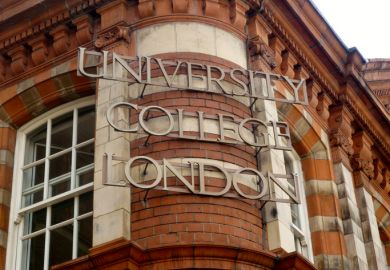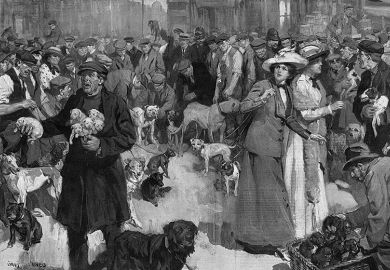Black-and-white photographs have a unique emotive force. They depict a past that can, in Philip Larkin's phrase, "lacerate/simply by being over". The interesting object, thus depicted, can "contract my heart by looking out of date".
No such febrile response can be expected from the contributors to this volume. For them (or so they say), photographs are to be viewed primarily as instruments of political power, especially since those in question were made in a colonial context. They discuss a collection of 19th-century photographs (and some earlier images including aqua-tints) of architecture in India. The collection belongs to the Canadian Centre for Architecture in Montreal, and the book accompanies an exhibition (though it does not include a catalogue). Their approach to this material follows an agenda that has been set by previous "insights" into "the politics of cultural representation", and is here restated by the editor, Maria Antonella Pelizzari, as bringing photographs "into the context of larger debates about colonialism's cultural technologies".
The contributors strive to follow the call. Even the normally cautious John Falconer, who has done more than anyone to investigate the history of photography in India, is here induced to suggest that "photographs can also be viewed in the context of the European colonial regime appropriating and consolidating its hold on the country's previous history". One has to admire the editor's effrontery in claiming that such ideas are original and even "provocative" when they rehearse, in unvarying vocabulary, an orthodoxy that has prevailed for the past 20 years.
What makes this volume interesting is the manner in which the agenda unravels as often as it is asserted. The link between photography and power is repeatedly claimed and then abandoned as each writer narrates a history and employs images only as illustrations. Thus Nicholas Dirks sets out his stall by invoking Edward Said on "colonial aesthetics", and then goes on to reprise his own earlier writing on the southern Indian state of Pudokkottai to tell a story that is here merely decorated with photographs by Linnaeus Tripe. The photographs are said, but not shown, to tell the same story.
Similarly, Narayani Gupta recounts some episodes from the revolts of 1857 to provide a context for the panoramas of Lucknow by Felice Beato, of which she says very little - though there must be something that would be worth mentioning about their technical virtuosity.
In an engaging essay, Thomas Metcalf revisits the theme of Lord Curzon's sense of history, and especially his projects to memorialise British rule through the building of the Victoria Memorial Hall in Calcutta, and the reconstruction of Zephaniah Holwell's memorial to the victims of the infamous Black Hole. Again, most of the images are mere illustrations. The fact that Curzon commissioned photographs of his travels from the best-known Indian photographer of the age, Lala Deen Dayal, is referred to as an interesting question and left unexplored. Tapati Guha-Thakurta analyses the 19th-century art historian James Fergusson's theories of Indian architecture, and especially his notion of India's perpetual decline - thus picking over ground that has been exhaustively surveyed by herself and others before. Although she points out that collecting photographs was essential to Fergusson's method, she does not discuss the photographs themselves.
The agenda unravels further in some essays, where it is not so much asserted and then passed over as seen to be problematic. Pity poor Julia Ballerini who discusses some photographs by a French engineer called Alexis de la Grange. Having constructed an interpretive frame that addresses her subject's "legitimising agenda", she is then surprised to find it unhelpful, as La Grange's images seem to tell her less about power and more about the vision of an engineer.
Writing on the Calcutta International Exhibition of 1883, Peter Hoffenberg slides between considering the exhibition itself (which is predictably seen as "part of a larger imperial effort to document and represent the subcontinent") and some photographs that record it. Perhaps troubled that the photographs were taken by an Indian photographer, Shivshankar Narayan, Hoffenberg suggests that "more than one vision of the Indian political community was on view there". This important recognition that Indian visions were also in play at such events is often repeated but sadly not explored.
Though Hoffenberg cannot pin it down, the book as a whole does not ignore the possibility that if European depictions of India embody a "colonial gaze", we might look for opposing, indigenous visions in the work of Indian artists and photographers. The concluding essays by Christopher Pinney and Partha Chatterjee address this matter directly. Unfortunately, they do not discuss Indian works that are contemporary with the 19th-century European photographs that are the book's main concern. The material they consider, from personal photography to calendar art and school textbooks, is all post-colonial, and while this bias may reflect their intellectual interests, it creates the wrong impression that an Indian vision could assert itself only after the formal end of empire.
Giles Tillotson is reader in the history of art, School of Oriental and African Studies, London.
Traces of India: Photography, Architecture, and the Politics of Representation, 1850-1900
Editor - Maria Antonella Pelizzari
Publisher - Yale University Press/ Canadian Centre for Architecture, Montreal
Pages - 343
Price - £35.00
ISBN - 0 300 09896 0
Register to continue
Why register?
- Registration is free and only takes a moment
- Once registered, you can read 3 articles a month
- Sign up for our newsletter
Subscribe
Or subscribe for unlimited access to:
- Unlimited access to news, views, insights & reviews
- Digital editions
- Digital access to THE’s university and college rankings analysis
Already registered or a current subscriber? Login



